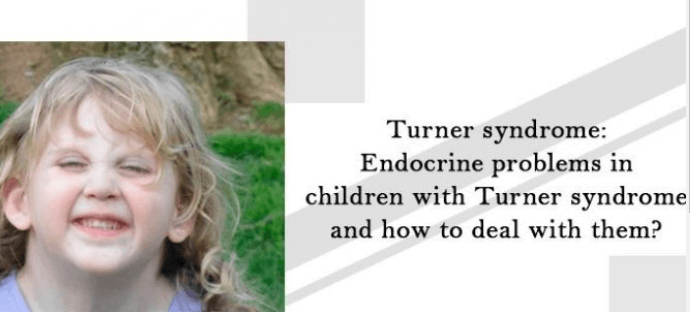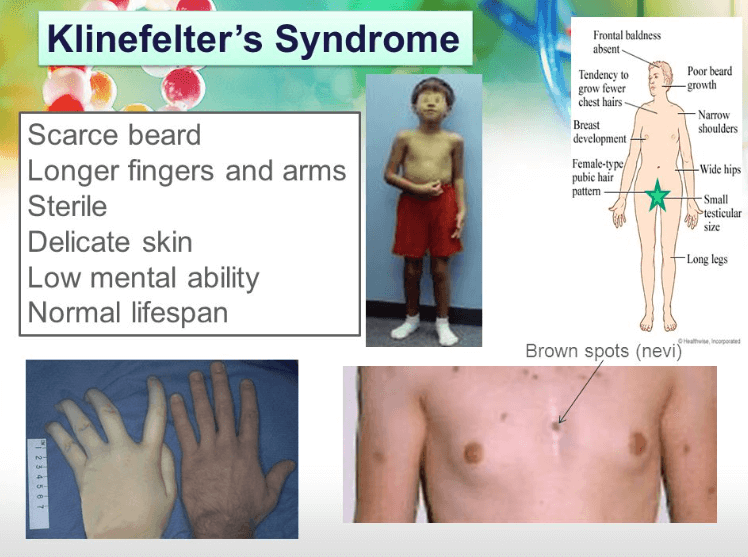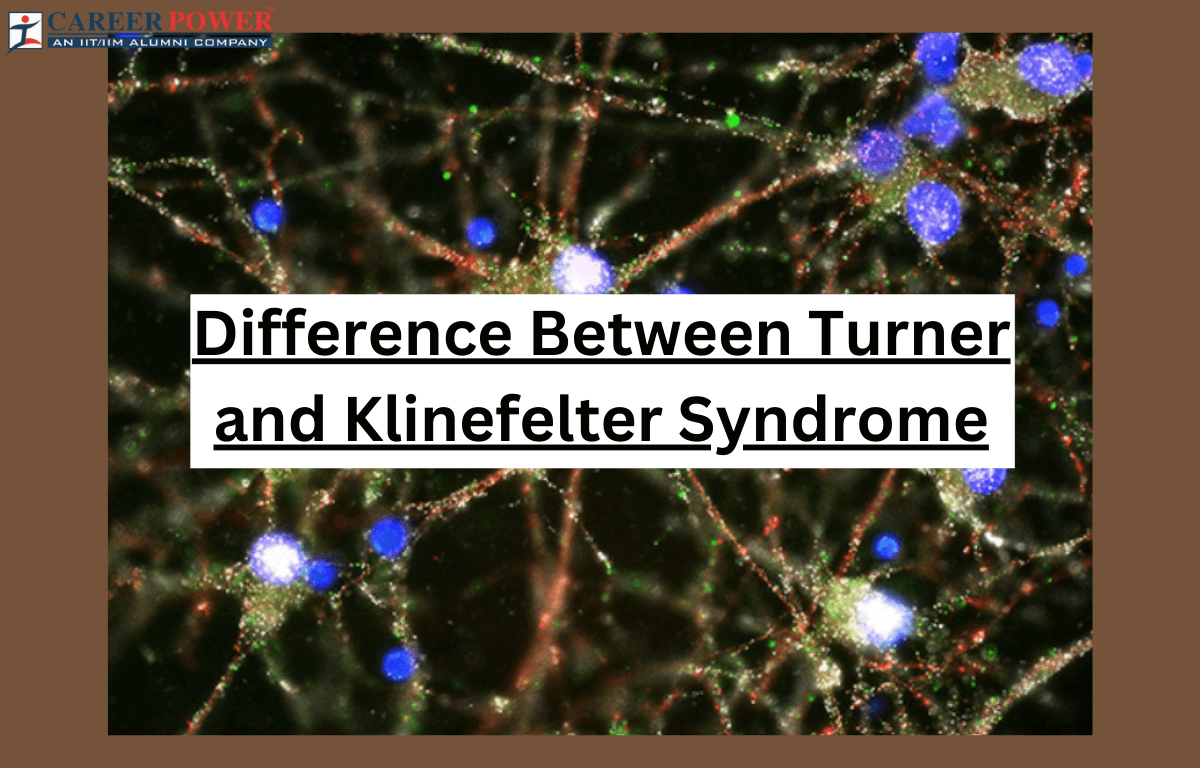Turner and Klinefelter Syndrome
Both Turner and Klinefelter syndromes involve chromosomal abnormalities and can have various effects on physical and reproductive development. Turner syndrome is a genetic condition in females where one of the X chromosomes is partially or completely missing. This leads to short stature, infertility, and certain physical features. Klinefelter syndrome, on the other hand, affects males and is characterized by the presence of an extra X chromosome (XXY). Individuals with Klinefelter syndrome may have reduced fertility, gynecomastia (enlarged breasts), and potential learning difficulties.
Define Turner Syndrome
Tuner syndrome is a genetic condition that affects females, occurring when one of the X chromosomes is partially or entirely missing. Typically, females have two X chromosomes (XX), but individuals with Tuner syndrome have only one X chromosome (X0). This can lead to various physical and developmental challenges. Common features include short stature, a webbed neck, and differences in reproductive system development, often resulting in infertility. Girls with Tuners syndrome might experience delayed puberty, and their ovaries may not function properly.

Medical care focuses on addressing specific needs, such as growth hormone therapy to improve height and hormone replacement therapy to include puberty. While Tuner syndrome can present challenges, with proper care and support, individuals can lead fulfilling lives. Regular check-ups and a multidisciplinary approach involving endocrinologists, geneticists, and other specialists contribute to managing the condition effectively.
Define Klinefelter Syndrome
Klinefelter Syndrome is a genetic condition that affects males. Normally, males have one X and one Y chromosome (XY), but individuals with Klinefelter syndrome have an extra X chromosome (XXY). This extra genetic material can cause various physical and developmental differences. Common characteristics include infertility, smaller testicles, and breast development (gynecomastia). Individuals may also experience language and learning difficulties. While the severity of syndromes varies, many lead normal lives with appropriate support.

Diagnosing Klinefelter syndrome involves genetic testing. Early identification can facilitate timely interventions, like hormone therapy, to address physical and developmental challenges. Understanding and managing the condition often involves a collaborative approach with healthcare professionals, educators, and families to ensure individuals with Klinefelter syndrome thrive socially and academically.
Difference Between Turner and Klinefelter Syndrome
It is crucial to note that individual experiences can vary, and not all individuals with Turner or Klinefelter syndrome will exhibit the same characteristics or symptoms. Below we have tabulated a few differences between Turner syndrome and Klinefelter syndrome.
| Difference Between Turner Syndrome and Klinefelter Syndrome | ||
| Features | Turner Syndrome | Klinefelter Syndrome |
| Chromosomal Makeup | Turner syndrome contains a chromosomal makeup of Monosomy X, where females have only one X chromosome (XO). | Klinefelter syndrome contains a chromosomal makeup of Trisomy XXY, where males have an extra X chromosome. |
| Gender Affected | Only females are affected with the Turner syndrome. | Only males are affected with the Klinefelter Syndrome. |
| Physical characteristics | Shot stature, webbed neck, low hairline, and specific facial feature | Tall stature, long limbs, gynecomastia (enlarged breasts), and reduced body hair. |
| Fertility | Turner syndrome is associated with ovarian insufficiency and infertility. | Klinefelter syndrome individuals often experience testicular dysfunction and infertility. |
| Onset of Symptoms | Turner syndrome symptoms are often noticeable during childhood or adolescence. | Klinefelter syndrome symptoms may become more apparent during puberty and adulthood. |
| Cardiovascular Issues | Turner syndrome individuals may be at a higher risk for cardiovascular anomalies, such as coarctation of the aorta. | Klinefelter syndrome is associated with a potential increased risk of cardiovascular problems. |
| Cognitive Development | Turner syndrome is sometimes associated with specific learning disabilities and spatial processing difficulties. | Klinefelter syndrome individuals may have language and learning difficulties. |
| Secondary Sexual Characteristics | Turner syndrome individuals may have delayed or absent puberty. | Klinefelter syndrome individuals may have incomplete or delayed developmental secondary sexual characteristics. |
| Treatment Approach | Hormone replacement therapy (HRT) is commonly used in tuner syndrome for addressing hormonal deficiencies. | Klinefelter syndrome may involve testosterone replacement therapy to address androgen deficiencies. |
| Treatment Approaches | Hormonal replacement therapy (HRT) is commonly used in Turner syndrome to address hormonal deficiencies. | Klinefelter syndrome may involve testosterone replacement therapy to address androgen deficiency. |
Causes of Turner syndrome and Klinefelter syndrome
The causes of these chromosomal abnormalities are mainly spontaneous errors during the formation of eggs or sperms, leading to abnormal chromosome numbers in the fertilized egg. Advanced maternal age increases the risk of Turner syndrome, while Klinefelter syndrome is more likely to occur with advanced paternal age. However, these conditions can also occur in individuals without a clear pattern of inheritance.
Causes of Turner Syndrome
- Turner syndrome is caused by the complete or partial absence of one of the X chromosomes in females.
- Typically caused by spontaneous errors during egg formation.
- Advanced maternal age increases the risk of Turner syndrome in females.
- Turner syndrome may also occur without a clear pattern of inheritance.
Causes of Klinefelter Syndrome
- The presence of an extra X chromosome (XXY) in males can lead to Klinefelter Syndrome.
- Klinefelter syndrome is caused by spontaneous errors during sperm formation.
- It is more likely caused by advanced paternal age.
- Klinefelter syndrome can also occur without a clear pattern of inheritance.



 50 Vegetables Name for Kids in English a...
50 Vegetables Name for Kids in English a...
 Food Chain: Definition, Types, Examples,...
Food Chain: Definition, Types, Examples,...
 Human Respiratory System: Definition, Di...
Human Respiratory System: Definition, Di...













